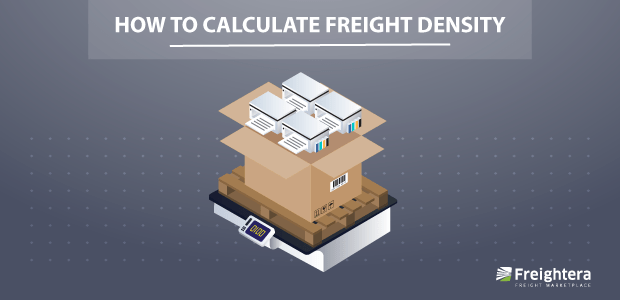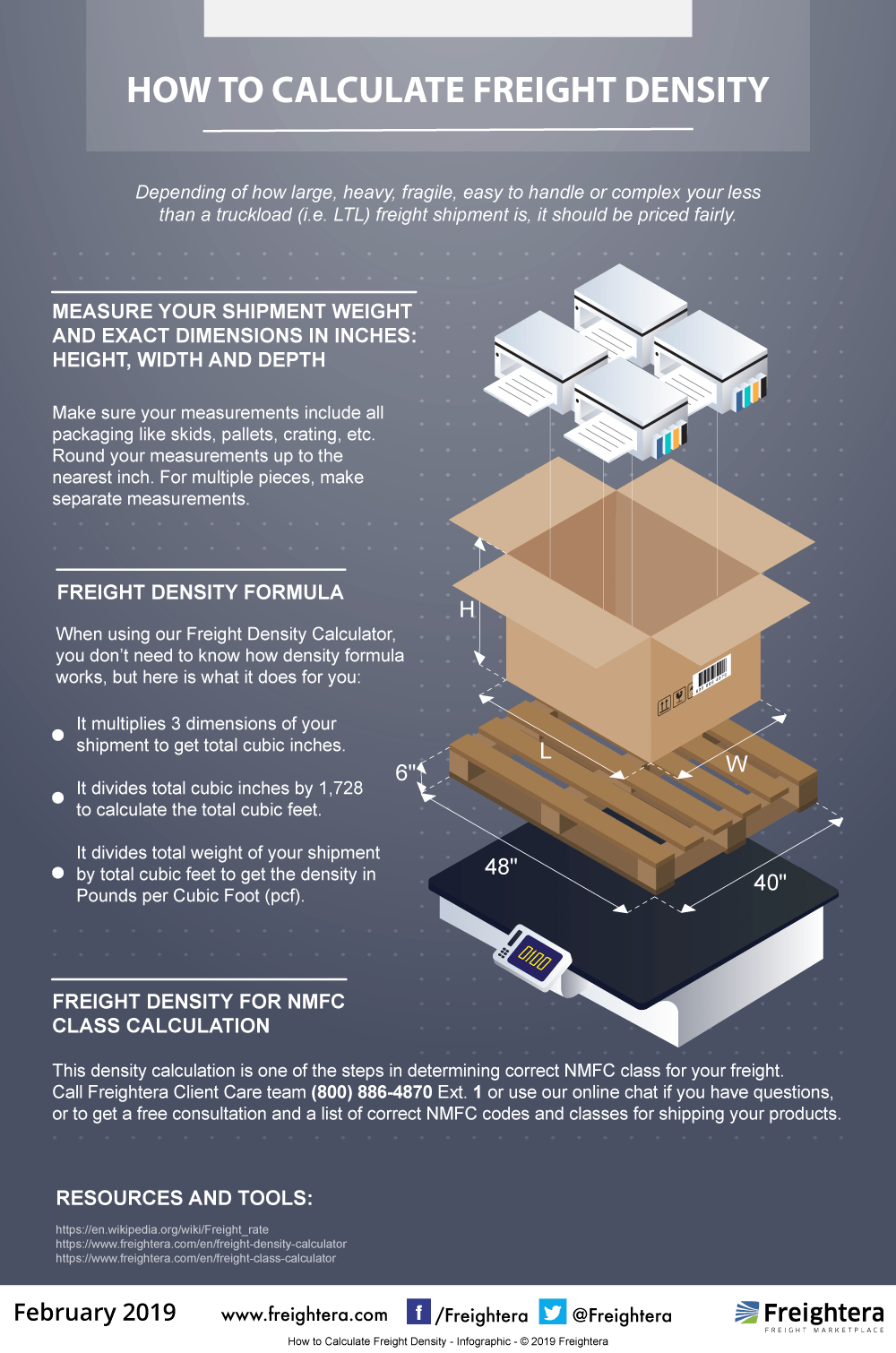How to Calculate Freight Density [Infographic]

How to Calculate Freight Density
[Updated June 2022]
No matter how large, heavy, fragile, easy to handle, or complex your less than a truckload (LTL) freight shipment is, it should be priced fairly. Please see our How to Calculate Freight Density infographic below or click here to see our Freight Density Calculator page on the Freightera website.
What is Freight Density
Freight density is the number representing the weight-to-volume ratio of your shipment. Density is a common pricing method of many carriers within the USA and Canada that allows them to charge more for overly-padded cargo. They (the carriers) can offer better pricing for shipments that are denser and presumed to be less fragile.
Measure Your Shipment Weight and Exact Dimensions in Inches: Length, Width, and Height
Make sure your measurements include all packaging like skids, pallets, crating, etc. Round your measurements up to the nearest inch. For multiple pieces, make separate measurements.
Freight Density Formula
When using our Freight Density Calculator, you don’t need to know how the density formula works, but here is what it does for you:
- It multiplies 3 dimensions (length, width, and height) of your shipment to get total cubic inches.
- It divides the total cubic inches by 1,728 to calculate the total cubic feet.
- It divides the total weight of your shipment by total cubic feet to get the density in Pounds per Cubic Foot (pcf).
The density class is made up of 11 categories (classes) ranging from 60 to 400. The denser your shipment, the lower its class will be. The airier, or more fragile your shipment is, the higher its class will be.
It is important to note that your density class will often not be the same as your actual freight class as most carriers in the USA use the NMFTA’s classification system. In their system, density is only one of the factors that determine your actual freight class.
Freight Density for NMFC Class Calculation
This density calculation is one of the steps in determining the correct NMFC class for your freight. NMFTA’s classes have 18 sections, as opposed to the density class which has 11.
Now that you know how and why you need to accurately determine your shipment’s density, there’s no better way to use that knowledge than to get all-inclusive freight quotes while everything is still fresh!
